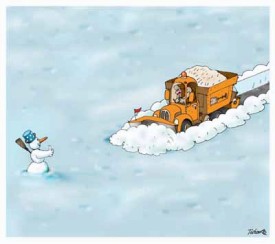Italian weekly: Who is hiding the truth on KLA crimes?
Ethnic Albanians have committed ghastly crimes in Kosovo, and among those that are to be held responsible for the massive murders of Serbs are former commander of the Kosovo Liberation Army (KLA) and Kosovo Prime minister, Ramus Haradinaj and Agim Ceku respetively, the Italian weekly magazine Panorama has set out in an analytical article, publishing for the first time the photos of Serb victims.
(KosovoCompromise Staff) Wednesday, January 14, 2009
Before the NATO bombing campaign Serbs were accused of being butchers, but as soon the forces of the Atlantic Pact marched into Kosovo in June 1999, they became the victims of an ethnic cleansing, the Milan weekly assessed.
Italian General Mauro Del Vecchio, who in June 1999 was in command of a brigade of 7,000 soldiers which also comprised Italian KFOR members, testified in the text about the suffering of the Serbs.
At the time, according to him, one could smell the horrible scent of death in Kosovo miles away.
"In the first twenty days or so, I received everyday reports on the corpses of Serbs and the Roma that had been left lying along the roads", said the Italian general, who is currently representing the (left-centrist) Democratic Party in the Italian Senate, upper house of the Parliament of Italy.
"Those who did not flee Kosovo, risked to be killed or kidnapped", he added.
The deserted Serb houses were torched and leveled to the ground, and the worst of all was that the Albanians also attacked the Serb churches and monasteries, their goal being to erase every trace of Serbs' presence in Kosovo, Del Vechhio said, pointing out that that was a taboo topic they were not allowed to speak about with journalists.
This is why a number of photographs that represented a testimony of the horrid crimes against Serbs were snatched away from Italian soldiers, but some of them which were made in secret have been preserved and the weekly Panorama published them recently.
These photos show the Italian soldiers as taking away the dead bodies of Serb civilians, which were scattered all over the place as the Albanians probably counted on that that NATO soldiers would clear the mess after them.
Nobody was taking away the Serb bodies that were left in all possible places, General Di Vecchio said.
"In a factory hall in Djakovica we also found corpses of the Roma", he said. "The mothers and wives of the abducted Serbs were pleading for their dearest ones to be found, but the majority of them have never been found", the Italian general said.
At the time when these photographs were made, the region was under the command of Ramus Haradinaj, a KLA commander who was appointed Kosovo Prime minister.
The Hague Tribunal had acquitted Haradinaj of all war crimes charges, since all the witnesses in the proceedings had been killed in very strange accidents, as the Tribunal itself had admitted.
In an interview with the Milan magazine, former head of the UNMIK Office on Missing Persons and Forensics ( OMPF) Jose Pablo Baraybar presented data on the kidnapping of Serbs that ethnic Albanian terrorists and separatists had committed in the vicinity of Orahovac in July 1998.
He investigated this massive crime in 2005, when the remains of 26 Serb civilians were found in a ditch in Vulojak, a village 50 kilometers away from Pristina.
Baraybar said that one women, whom the Albanian forces had set free, had testified that she had distinctively heard KLA officer Jakup Krasnici, current speaker of the Kosovo parliament, as giving the order "Kill them all."
His command referred to the kidnapped men, among whom there boys as well.
"When we finally obtained all relevant facts - the victims, evidence and witnesses - The Hague Tribunal told us that it was too late for a new investigation because the Tribunal would be closed in 2010", the Peruvian diplomat said, pointing out that the Kosovo judiciary was not interested in that case.
The Peruvian forensics said that on February 4, 2004, he had also carried out an investigation into the Yellow House issue, a prison located in Burela, northern Albania, where, as he put it, he had obtained no decisive facts, but had rather found a number of serious indications on the murder of kidnapped Kosovo Serbs and the vital organs that had been taken out of their bodies.
The KLA arrested about 300-400 Serbs, Roma inhabitants and Albanian collaborationists and hid them in their secret camps in Albania, one of which was located in Kukes, Baraybar said, referring to the testimony of an ethnic Albanian who is loyal to the Serbian state and who survived thanks to his father who paid ransom.
"This witness told me that the camp in Kukes had been visited by a number of KLA members, including Agim Cheku", he said, reminding that Ceku had been Kosovo Prime Minister after that (up to January 2008).
Baraybar made a report on the investigation, in which he claims that traces of blood, as well as injections, muscle relaxants, surgery material and similar equipment were found in the kitchen and the broom closet of the Yellow House, all of which proved that Albanian surgents had taken organs out of the Serbs' bodies.
The indications we have come across were crystal clear and they sufficed for the launching of a true investigation, the Peruvian diplomat said, but, as the weekly magazine reminded, the ICTY had done nothing after that.
The issue of trade of kidnapped Serbs' organs was actualized only recently, when former ICTY chief prosecutor Carla del Ponte spoke about the issue in her book entitled The Hunt: Me and War Criminals, after which the Council of Europe entrusted Swiss parliamentarian Dick Marty with the investigation into this issue, the Milan weekly magazine Panorama reminded.







